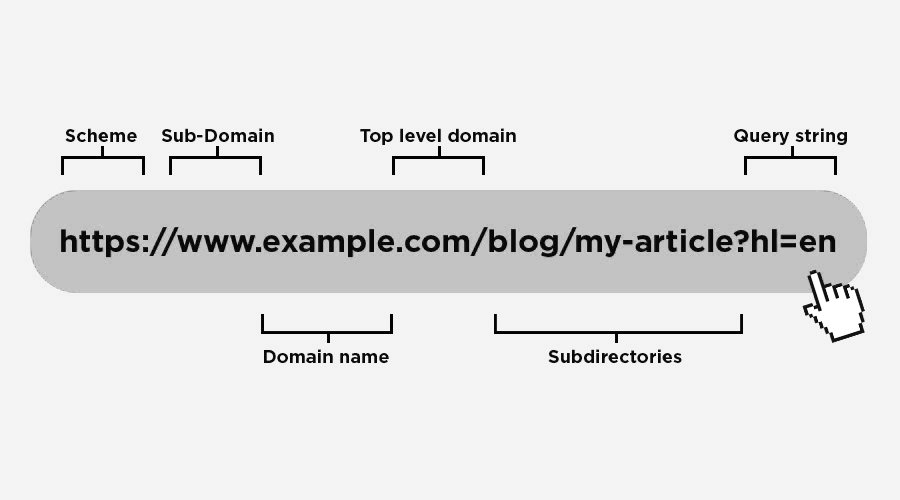In today’s digital world, eCommerce websites have become the backbone of businesses looking to expand their reach and generate more sales. Whether you’re a small business owner or a large enterprise, having an optimized and user-friendly eCommerce website is crucial for success. In this guide, we’ll dive into everything you need to know about eCommerce websites, from their key features to future trends.
What Are eCommerce Websites?
Definition
An eCommerce website is a platform that allows businesses to sell products or services online. Through these websites, customers can browse, choose, and purchase items without stepping foot in a physical store. Transactions happen online, and businesses handle everything from inventory management to payment processing via the site.
History and Evolution
The first online transaction took place in 1994, but the world of eCommerce websites has exploded since then. From simple websites with limited functionality to the complex and feature-rich platforms we see today, eCommerce has evolved to meet growing consumer demands.

Key Features of Top eCommerce Websites
User-Friendly Interface and Navigation
One of the essential aspects of a successful eCommerce website is ease of use. Customers need to quickly find what they’re looking for with minimal hassle. Clear categories, a search bar, and intuitive design elements help make shopping enjoyable and straightforward.
Mobile Responsiveness
With a significant portion of online shopping now happening on mobile devices, having a mobile-friendly eCommerce website is non-negotiable. A website that looks great and functions smoothly on smartphones and tablets ensures that you’re not missing out on potential sales.

Fast Loading Speed
Slow loading websites are a surefire way to lose customers. Your eCommerce website should load quickly to keep visitors engaged and browsing. Google also factors site speed into its ranking algorithm, so it’s a critical aspect of SEO.
Secure Payment Gateways
Security is everything when it comes to handling financial transactions when it comes eCommerce websites. Your website should integrate secure payment gateways such as PayPal, Stripe, or others that ensure customer data is protected.

Search Engine Optimization (SEO) Capabilities
If your website isn’t optimized for search engines, it’s harder to get found by potential customers. Implementing solid SEO strategies like optimizing product descriptions, images, and metadata can make a huge difference in how your eCommerce website ranks in search results.
Popular Platforms to Build eCommerce websites
Shopify
Shopify is a widely popular platform known for its ease of use and a wide range of features. Whether you’re a beginner or an experienced user, Shopify provides tools that can help you build and grow your eCommerce website.WooCommerceFor WordPress users, WooCommerce is a go-to plugin. It’s incredibly customizable, allowing you to create a unique eCommerce website with a variety of features, including product management, payments, and shipping.

BigCommerce
BigCommerce is another robust platform for building eCommerce websites. It offers scalability, making it perfect for businesses that anticipate rapid growth. It also includes tools for SEO, marketing, and secure payments.
Magento
Magento is highly customizable and feature-rich but requires more technical expertise to set up. This platform is typically used by larger businesses or developers who want to tailor their eCommerce website to specific needs.SquarespaceSquarespace is known for its visually stunning templates. While it’s often associated with blogs and portfolios, its eCommerce website functionalities are impressive, making it a solid choice for small businesses or startups.
Customization and Scalability
Flexibility in Design and LayoutA well-designed eCommerce website stands out from the crowd. The ability to customize your site’s layout, colors, fonts, and other visual elements helps create a unique shopping experience for your customers.

Plugins and Add-ons for Additional Features foe eCommerce websites
Many platforms offer plugins or add-ons to enhance your eCommerce website’s capabilities. These include options like adding a live chat function, integrating email marketing tools, or automating social media posts.
Handling Growth and Scaling
As your business grows, so should your eCommerce website. Choosing a platform that supports scalability ensures you can handle increased traffic, more product listings, and expanded payment options without needing to switch to a new system.
SEO Best Practices for eCommerce website
Optimizing Product Descriptions
Unique, detailed product descriptions help customers make informed decisions and boost your SEO efforts. Use relevant keywords, such as “eCommerce websites,” in descriptions, but avoid keyword stuffing.
URL Structures for SEO
Make sure your URLs are clean and structured logically. Instead of using long strings of numbers and letters, opt for descriptive URLs like “yourstore.com/ecommerce-website-design” to make it more SEO-friendly.

Image Optimization for Faster Loading
High-quality images are crucial, but they shouldn’t slow down your website. Compress images without sacrificing quality to ensure they load quickly. Also, include alt text that uses your focus keyword, “eCommerce websites,” to improve your SEO.
Internal Linking for Better Site Navigation
Strategically placing internal links helps guide users through your website and keeps them on your site longer. It also helps search engines better understand the structure of your eCommerce website.
Avoiding Duplicate Content Issues
Duplicate content can harm your SEO efforts. Ensure each product page has unique descriptions, and avoid reusing content across multiple pages of your eCommerce website.
Mobile Optimization for eCommerce Websites
Importance of Mobile-Friendly Design
With Google’s shift to mobile-first indexing, it’s vital that your eCommerce website looks and performs well on mobile devices. Sites that aren’t mobile-optimized will likely rank lower in search engine results.
Mobile-First Indexing and SEO Impact
Mobile-first indexing means Google predominantly uses the mobile version of your website for ranking and indexing. A well-optimized mobile experience directly contributes to higher visibility in search results.

Ensuring Seamless User Experience on All Devices
Your eCommerce website should deliver a consistent experience whether the customer is on a phone, tablet, or desktop. This consistency can make or break a sale.
Security Features on eCommerce websites
SSL Certificates and HTTPS Protocol
An SSL certificate ensures that your website operates over HTTPS, protecting sensitive data during transactions. Search engines prioritize secure websites, so it’s also an SEO advantage.

Protecting Customer Data
Implementing data protection measures like encryption and secure storage is essential. Customers need to trust your eCommerce website with their information, especially credit card details.
Secure Payment Gateway Integration
Ensure that the payment processors you use are well-known and trusted. Payment gateways should meet the highest security standards, protecting both you and your customers from fraud.
Two-Factor Authentication for Added Security
Two-factor authentication (2FA) adds an extra layer of protection by requiring users to verify their identity using two methods, like a password and a code sent to their phone.
Payment Gateways and Options for eCommerce websites
Popular Payment Processors
Offering a variety of payment options ensures that your customers can choose their preferred method. Common gateways include PayPal, Stripe, and Square.
Supporting Multiple Currencies
If you’re selling globally, having the ability to accept multiple currencies makes your eCommerce website more accessible to international customers.

Managing Refunds and Chargebacks
Having a streamlined system for handling refunds and chargebacks builds trust and improves the overall shopping experience on your eCommerce website.
Security Measures in Payment Processing
Payment processors must be PCI-compliant to ensure secure handling of credit card information. Make sure your eCommerce website meets these standards.
Conclusiom
Choosing the Right eCommerce Website for Your Business
Selecting the right eCommerce website platform and features can make all the difference in your business’s success. Whether you’re just starting or looking to scale, focus on the key aspects like SEO, mobile optimization, security, and user experience to create a site that stands out and converts visitors into customers.
FAQs
What is the difference between eCommerce and a regular websites?
An eCommerce website allows users to buy and sell products or services online, while a regular website might just provide information or services without transactional capabilities.
How much does it cost to build an eCommerce website?
Costs vary depending on the platform and features. Expect to pay anywhere from $500 to $5,000 for basic setups, with more complex sites costing even more.
Can I build an eCommerce website without coding knowledge?
Yes! Platforms like Shopify and Squarespace allow users to build an eCommerce website without coding, thanks to drag-and-drop interfaces and easy-to-use templates.
How do I improve my eCommerce website’s SEO?
Focus on optimizing product descriptions, images, and metadata, improving page load times, and ensuring your site is mobile-friendly.
What are the best platforms for small eCommerce businesses?
Shopify, WooCommerce, and Squarespace are great options for small businesses due to their ease of use and range of features.
Pingback: 5 Ideas to Make Money from Home – Easy Ways to Boost Your Income - bileguide